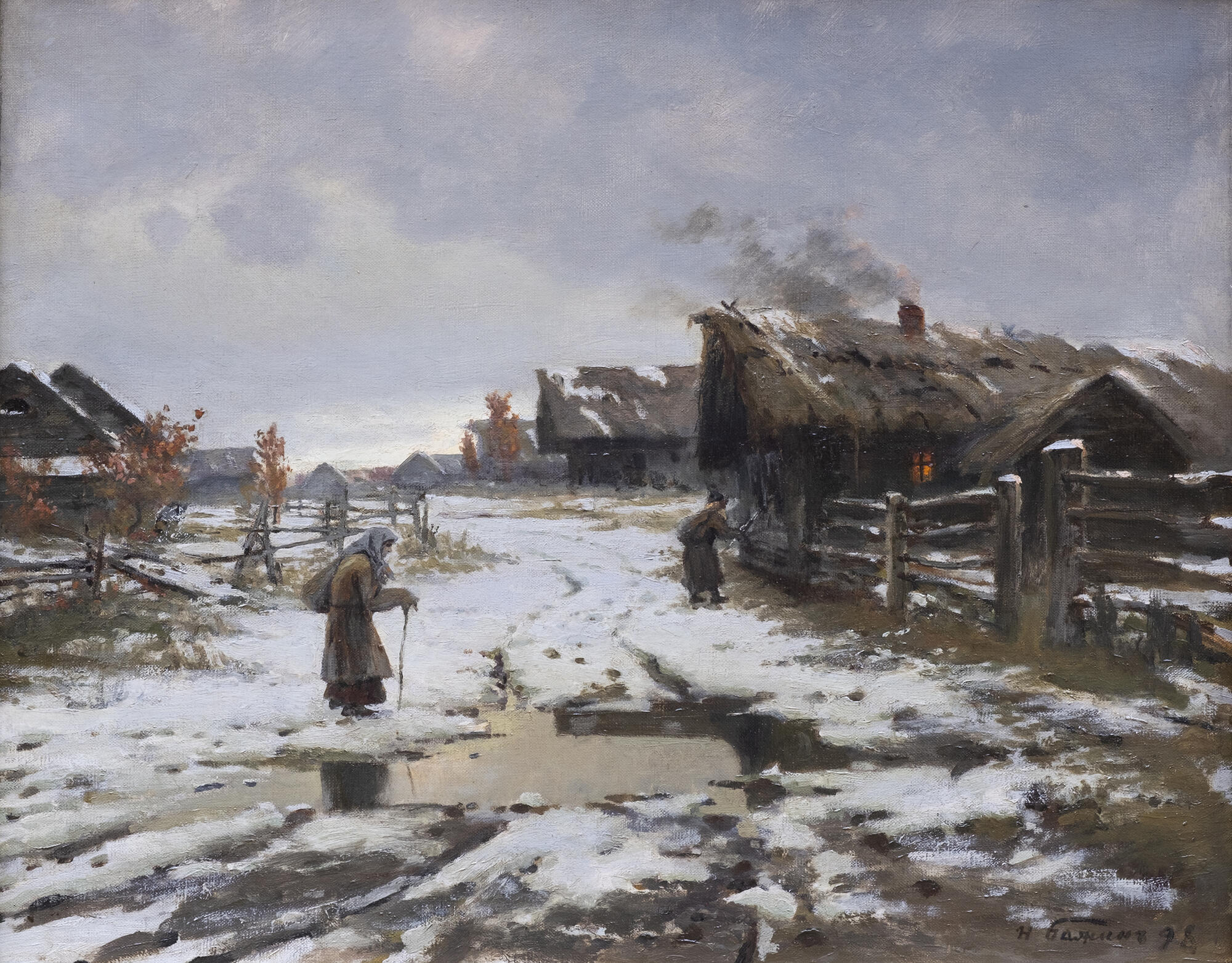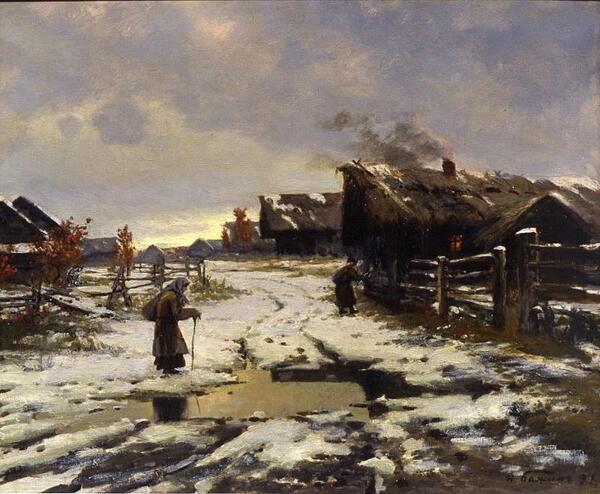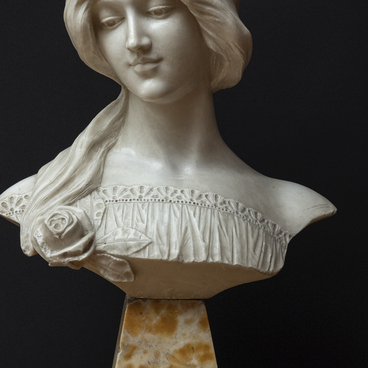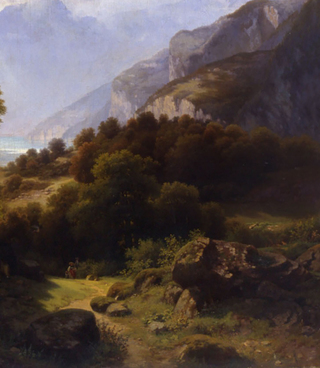“Evening in the Village. Thaw” is the only painting by the artist Nikolai Nikolaevich Bazhin currently displayed in a Russian state museum, except for a watercolor from the Vyatka Art Museum.
The landscape was painted in 1898. By that time, Nikolai Bazhin had already been recognized as an artist. His landscapes were not vibrant or spectacular but were full of lyricism and inspiration. It is still unknown which location is depicted in this landscape. “Evening in the Village. Thaw” is not the artist’s first countryside landscape. Before that, he had painted “Rain” and “Village Yard”. The artist conveyed the reality of a Russian village and the feeling of poignant sadness in a heartfelt manner. The landscape features two human figures, which is extremely rare for Bazhin’s paintings.
Little is known about the artist’s life and environment. Nikolai Bazhin was born in St. Petersburg and studied at the Imperial Academy of Arts. He participated in many traveling exhibitions, and his painting “Spring Evening” was purchased by Pavel Mikhailovich Tretyakov for his gallery. Unfortunately, in the 1930s, the painting was transferred from the Tretyakov Gallery to the Czechoslovakian embassy, and its current whereabouts are unknown.
The artist painted mainly landscapes, including “Gray Day”, “Twilight”, “Winter Morning”, “Rain”, “First Snow”, and “Autumn”. In the early 20thcentury, he contributed illustrations for Nikolai Gogol’s novel “Dead Souls” and created a number of captivating images, including “Snow Blizzard in St. Petersburg”, “Plyushkin’s Garden”, “Home”, and “Highway”. The names of his paintings displayed at traveling exhibitions indicate that he often traveled throughout Russia.
In the last years of his life, Nikolai Bazhin
rarely exhibited his paintings. In 1917, he died of typhus at the age of 60.
Judging by the illustrated catalogs of traveling exhibitions, he was a very
prolific artist.



